
Try these 10 Free Number Mats to teach the numbers 1-10 in five hands-on, super fun ways.
When teaching my kindergartners numbers 1 through 10, I wanted them make the connection between the number and the quantity AND help teach them how to recognize and write the number.
Bonus points for making it fun... So I made these number mats for them and thought you could use them too!
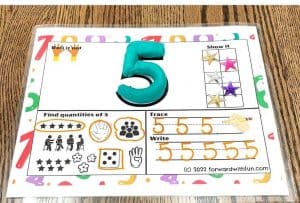
These hands-on number mats teach each number through:
So much learning is happening just by playing to learn with just one number mat.

The common core math standards we hit are:
After printing your number mats, I highly recommend laminating them. My secret weapon is an AmazonBasics laminator that creates a thick, durable lamination for teaching resources I plan to use a lot!
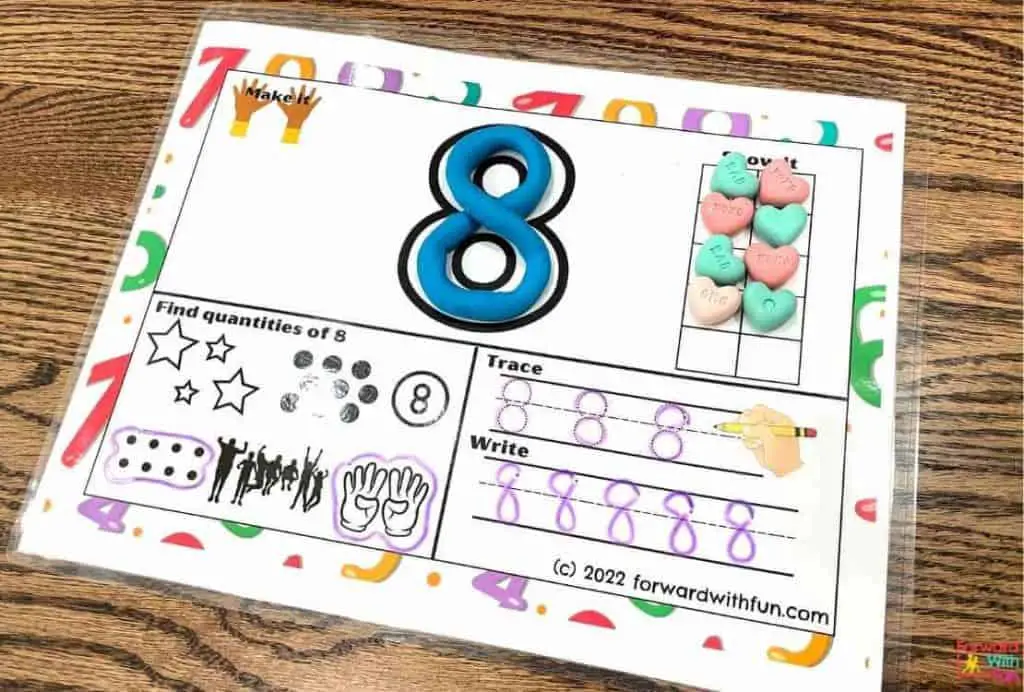
Another option is to use a simple plastic page protector, but those are harder to erase. You can also print them out as single-use printables if you're in a rush.
These number mats are hands-on, so instead of just writing on them, kids are invited to use objects to really engage with each number. We use Play-doh to shape the number, so I love the laminated mats because the dough comes off easily.
Some supplies you might want to have are:
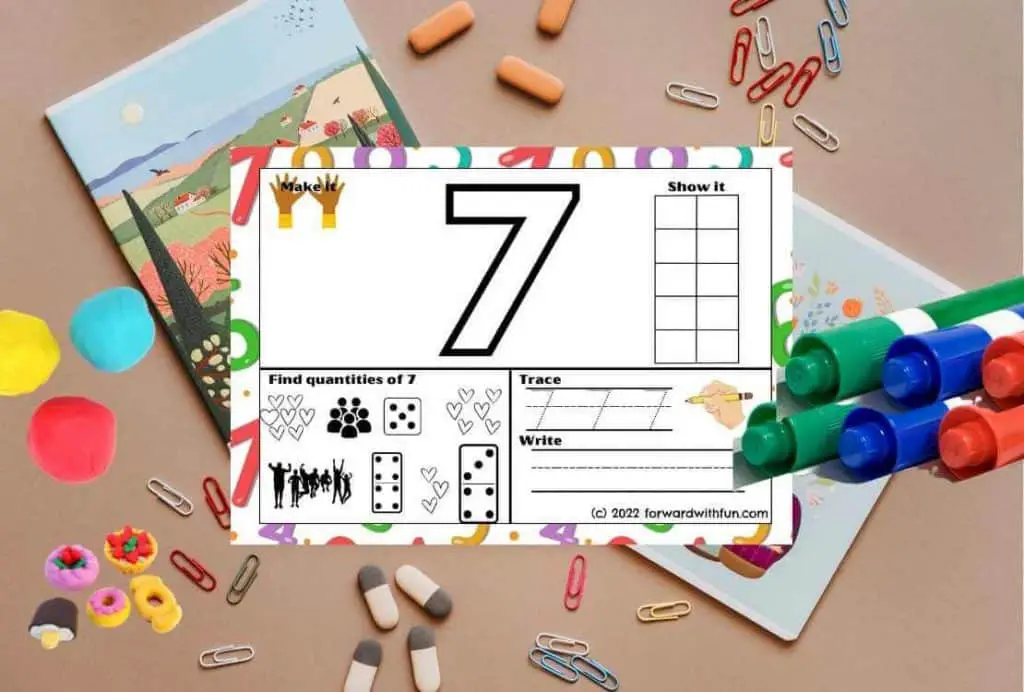
When learning numbers for the first time, kids are already receiving a lot of new input. At the very young age of 3-6 we expect them to memorize all these squiggles and lines, 26 letters- capital and lowercase plus numbers 1-20 in kindergarten. It's a lot!
Repetition is one part of the puzzle. In order to memorize a new number, kids need a ton of exposures to that specific digit. These exposures must be memorable! So a worksheet won't cut it.
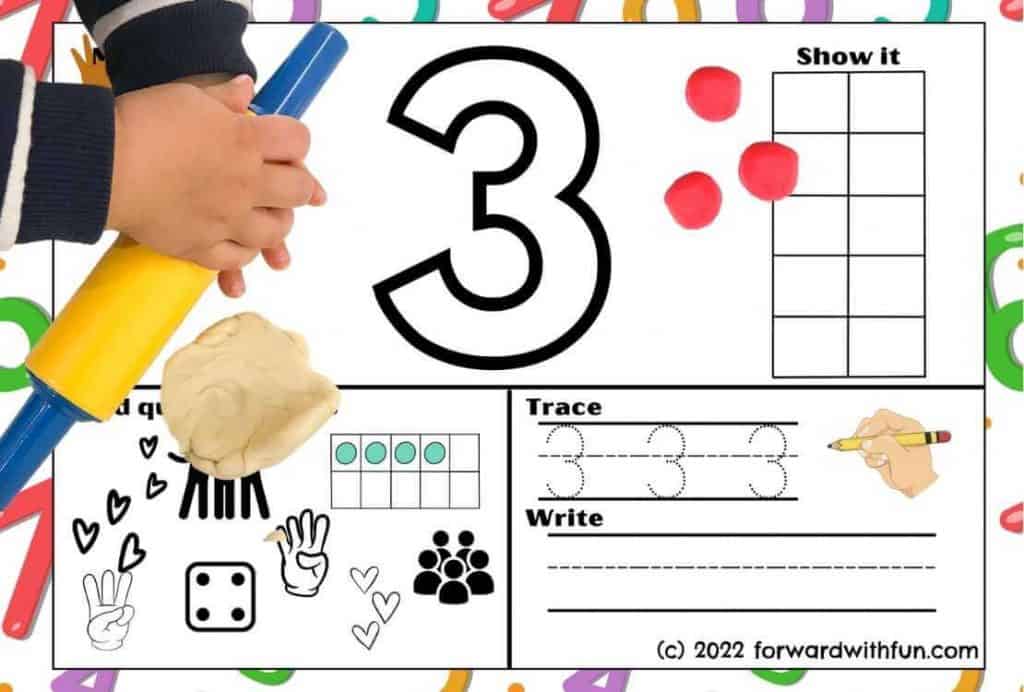
The number mats I'm sharing with you are exciting for my students because they get to work with preferred objects, manipulatives, and use their minds in multiple ways while they work!
They're interacting with each number many times making it easier to remember:
I've said it once and I'll say it again, hands-on experiences are worth 1000 times more than a worksheet a child will do and forget by snack time.
My students LOVE these number mats, and they even ask to do them over and over again solidifying their knowledge and practicing their number sense as well as number identification skills.
I'm sure you're working on letters as well. You don't want to miss these alphabet mats the kids go gaga for!
Rote counting is saying numbers in sequence. What it's not: counting any quantities or objects.
Before learning to count quantities, otherwise known as counting with one to one correspondence, children must memorize the order of numbers and be able to say them correctly in sequence: 1, 2, 3, 4, 5, and so on. That is called rote counting!
There are so many engaging ways to learn the numbers in sequence, some through music and games and others through the actual counting of objects in everyday life. Try these rote counting activities while having fun playing with your child.
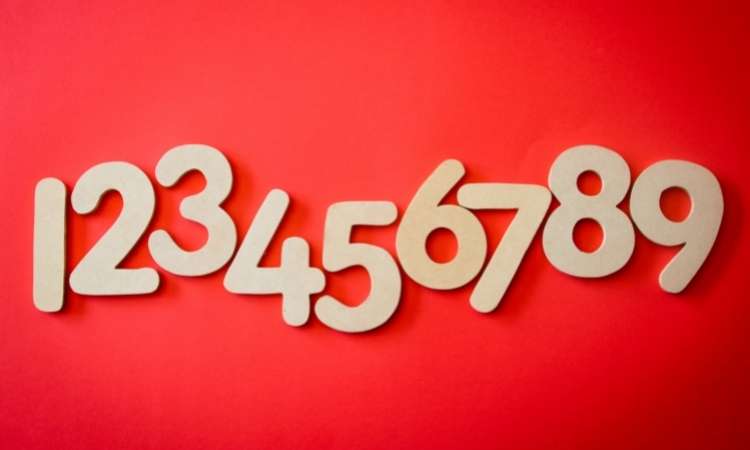
*As an Amazon Associate I may get a small commission if you decide to purchase from my links. Thank you.

Knowing the order of numbers is essential before you are to count objects accurately or do any type of arithmetic. Think about it, in order to add 3 to 2, you need to know what numbers comes next when you first count to 3, then add the 2, and then finally count the sum.
Rote counting is a skill that develops in older grades as we ask children to count from numbers other than 1, find the the numbers that come after, or add by counting on.
Skip counting is also a form of rote counting where children memorize the sequence of numbers based on a pattern like multiples of 2's or 10's.
Children as young as 2 begin rote counting numbers to around 5. In preschool, children learn to rote count to 10 and often 20. In kindergarten children learn how to rote count to 100.
Yes, modeling rote counting helps children memorize the numbers. Much like a new song, it takes our minds time to remember the lyrics. Soon rote counting will be so automatic for them, they'll need to slow down!
Most activities are strictly about rote counting. A few at the end incorporate the next step in counting which is beginning to count objects and number recognition.
This classic game involves rote counting. Whomever is chosen as the seeker counts to a certain number before shouting, "Ready or not?! Here I come!" Is your child learning how to rote count to 10? 15? 20? Play "Hide and Seek" and make that the number the seeker counts to each time.

There are so many children's songs that include rote counting. Here are a few with links to their Youtube videos if you're not familiar:
The Ants Go Marching
1, 2, 3, 4, 5 Once I caught a fish alive!
Using a deck of cards, remove all the face cards. Have your child flip over a card and count up to that number. This is great for preschoolers counting to 10, but you can play it by including higher number flashcards. Not only will this improve rote counting skills but it'll also help kids with number recognition too!
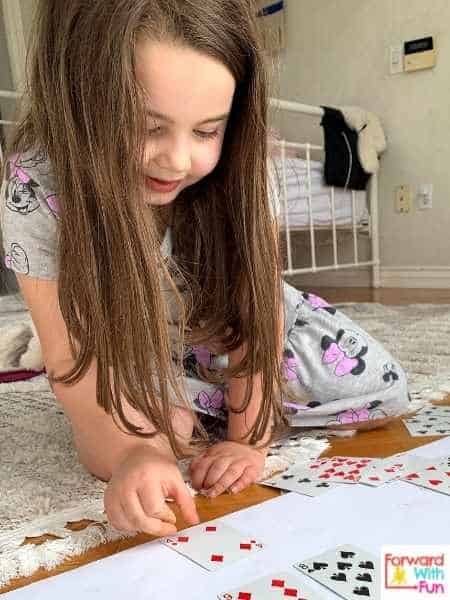
Is it just me, or do my kids listen better to Alexa than when I give a direction? Use that to your advantage, and ask them to have Alexa (or any other house robot item) count up to a certain number. They can listen as she models the rote counting or join in on the count. It's too easy!
When my fitness instructor says, "We are going to be doing planks for a whole minute," you know I'm counting every last second. Whether it's jogging to the end of the block or holding a tricky yoga pose- rote count to 20 or higher with your child as you're working out!
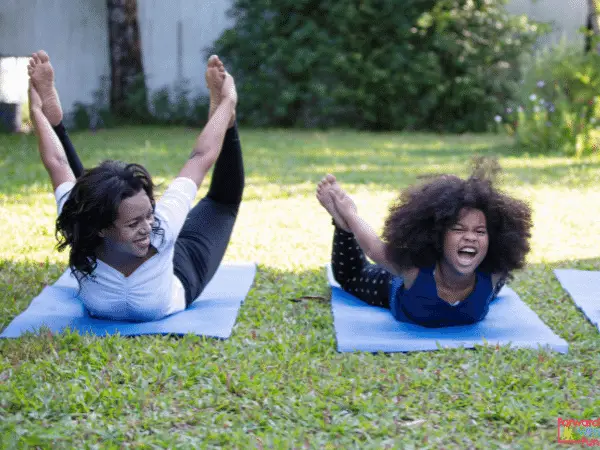
There are so many rote counting books out there. While you're reading the pages, your child will get to become familiar with the order of the numbers but also see the numbers many times, helping with number recognition. You can even count the objects on each page, which is not rote counting, but the next step in math skills.
Some of my favorites include:
Hippos Go Berserk by Sandra Boynton
Ten Apples Up on Top! by Dr. Seuss
Chicka Chicka 1,2,3 by Bill Martin Jr.
Using a large ball that your littles find easy to catch, try to pass it back and forth without dropping it to the ground. Count while you're passing the ball. If you count one number for each successful ball you're practicing rote counting and counting with one to one correspondence at the same time.
A way to do this as a rote counting activity would be to have your child repeat the number you say back to you, to help cement the order of new numbers: 1, 1, 2, 2, 3, 3, and so forth.
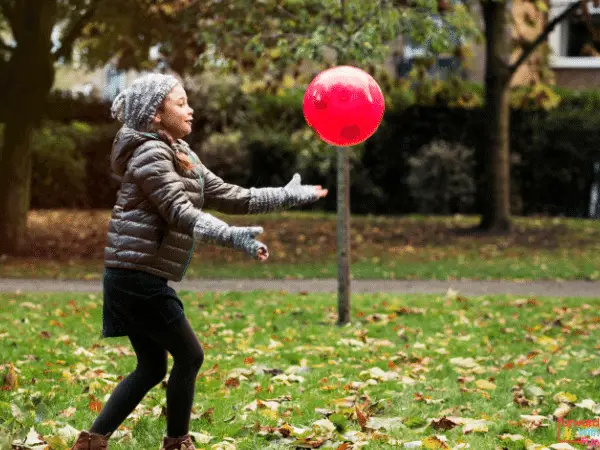
Do you have a calendar in your home? For us it's where I write all the special events (usually with a picture)so that my kids get excited and know how to "read" it. Each day we take a second to look at the calendar, usually during a meal.
If you have a calendar, notice the date with your child and practice rote counting up to that number. Even if you're the only one counting, hearing the sequence of numbers daily is powerful learning!
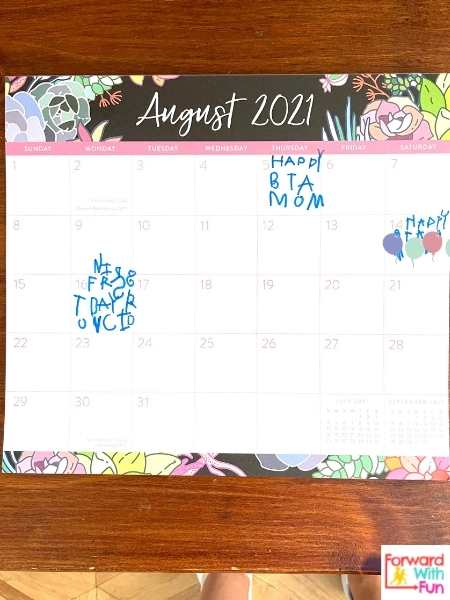
This is a great boredom buster for times when you have a few minutes to spare. Pick a target number to count up to. Take turns creating a movement pattern to do to the beat of the counting. For example, stomp, stomp, clap, clap. As you do each movement count one number more until you rote count to the target number. Take turns choosing the pattern; kids love to be the leader!
You don't need to wait until Halloween to play this rote counting game. Use a new voice to count to 20 and have the other person guess who you are pretending to be. Are you a baby, Dracula, a fancy lady, a mouse, Peppa Pig?
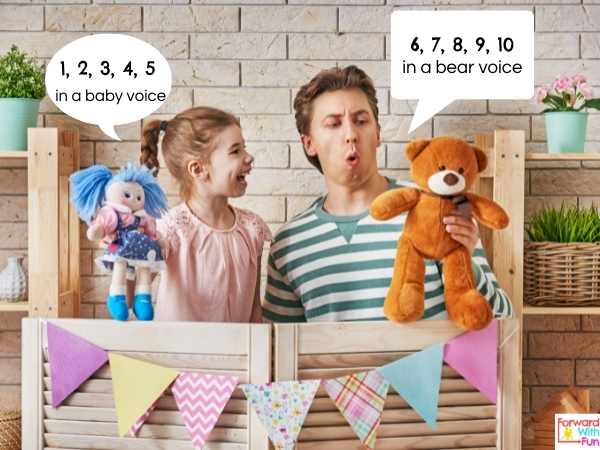
How long can you balance on one foot? Rote count as you challenge each other not to topple over while balancing on one foot!
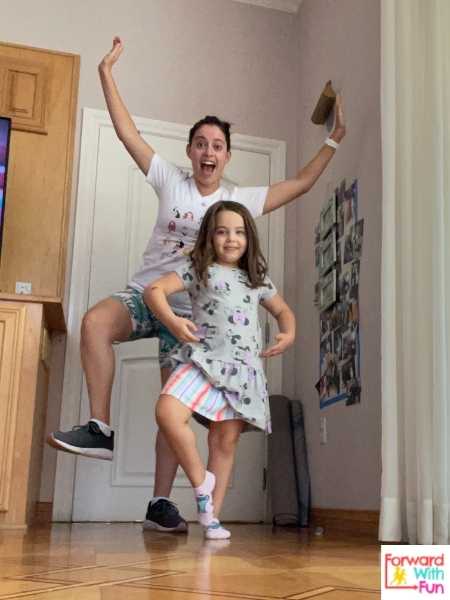
My kids have loved bubbles for always. In this bubbly rote counting activity, blow some bubbles. Pick one to follow and count how long until it pops! You can focus on the same bubble or make it competitive by choosing different bubbles. Remember to count together. How long did it take for your bubble to pop?
Usually I don't include screen activities, but I picked this toy up at a clothing and toy swap years ago, and I'm so glad I did. The phone has multiple rote counting songs as well as little animations for the numbers 1-9. I definitely need to give it some credit for my kids' love of numbers and counting.

Parents, snack is almost always a preferred activity for kids, so let's make it work for us. Have them count their snacks! With this simple set-up my kids were practicing rote counting, counting with one to one correspondence, and number recognition. It's one of the most favorite activities from our Fun Club activities
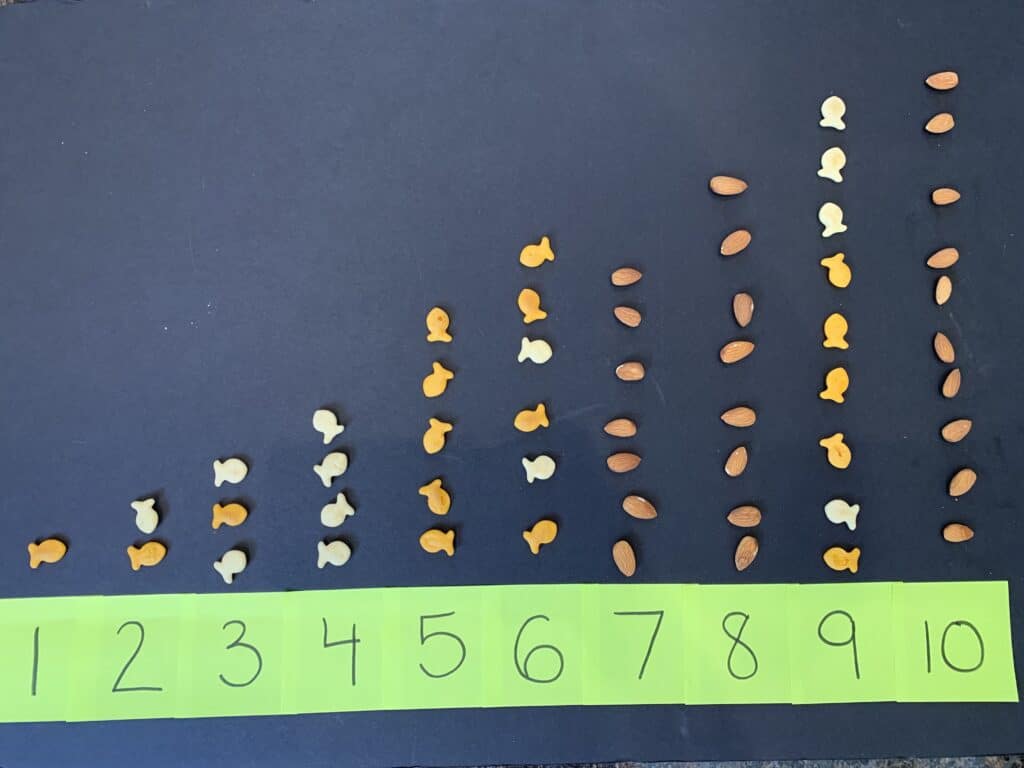
General rule: kids love stickers. Peeling stickers is also a great fine motor activity. On a piece of paper (or really anything) write a few numbers your child is working on recognizing. Divide up the spaces and have them put that number of stickers in each section. This activity will build rote counting skills as well as number sense and help kids count accurately.
How do we get kids excited about numbers and counting? Let them choose what they count. Counting collections are a great way to help kids learn to count up to very high numbers, like in this activity where we counted to 100. But you can count smaller quantities too.
Let's get all their favorites: race cars, stuffed animals, dinosaurs, construction trucks, fairies, etc. Count your collection to practice SO many math skills.
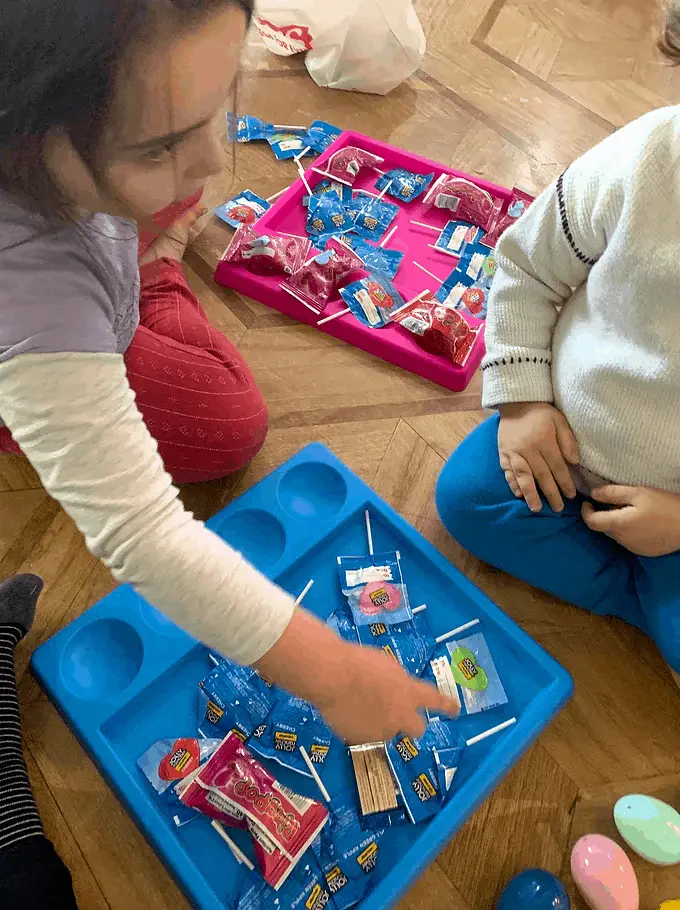
This is a fun rote counting activity for any time of day if you've got stairs in your home. I've found my children naturally count the steps as they go up and down them. You can walk up the stairs, crawl up the stairs, or march, just make sure to hold the railing!

I'm really big into doing sensory bins with my children (3-5 years old). Our favorite kinds of tools are scoopers and bottles. Have your children scoop and transfer whatever your bin is filled with and count how many scoops were needed to fill the container. Counting scoops of any kind is lots of fun, plus it's soothing!
Have you ever seen one of these? I made it with a shoe box, cutting out a holes for anima mouths. I haven't thrown it away after years because my kids still love to play "Feed the animals" with pom poms. They gather their colorful pom poms and count as they stuff them through the little hole. Again this activity involves saying the numbers in order but also involves counting objects too, so it's not solely a rote counting activity.

Play anywhere and any time, it's super easy. Pick two spots in your home (or wherever). How many steps will it take to get you from one spot to the other? How many will it take your partner? Now how many will it take if you do giants leaps? Baby steps? You can even challenge each other to only get from point A to point B in a certain number of steps. This activity is counting but is a little more advanced because children must be able to count accurately!
Rote counting is the most basic math skills that is essential for children to be able to do before most other math skills. Try any of these rote activities to help your child learn the basics while also having fun!
Does your young child have 1 to 1 correspondence? If they don't, they may count objects too fast and accidentally skip over items or count the same one twice.
The 1 to 1 correspondence definition is counting one number for every object counted. Simple put, it's counting accurately.
One to one correspondence develops for numbers under 5 in the preschool years and by the end of kindergarten, kids are expected to accurately count up to 20 objects.
*As an Amazon affiliate, I may get a small commission for purchases made through links in this post, most likely pennies ; )
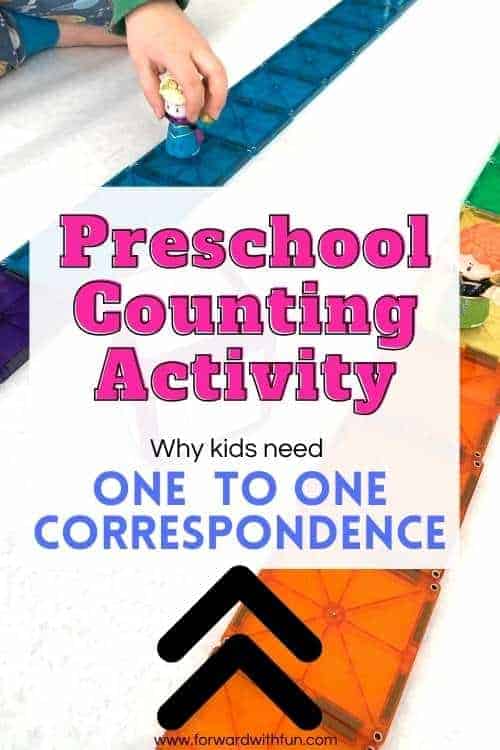

2. Dry Erase Foam Dice- These dry erase dice allow me to put what I want to on each side. For my 2 year old who only knows numbers up till 3, I wanted to reinforce those numbers only. This would also make it easier for her to count with one to one correspondence. On each side, I wrote 1, 1, 2, 2, 3, and 3. You can personalize it however you want! We even use them to add an element of surprise to chores and so many other ways.

3. Two toys of the kids' choosing, could be anything!
Making the board game together will be a great opportunity for practicing 1 to 1 correspondence.
We chose to have two separate tracks, but really you can make a board that all players use!
When making two seperate tracks, it was important that both players had the same number of Magna-tiles, or the game wouldn't be fair. This led us to deciding a certain number and counting that many squares together.
For counting larger numbers, it is important that children move each piece as they count one more in order to keep track.
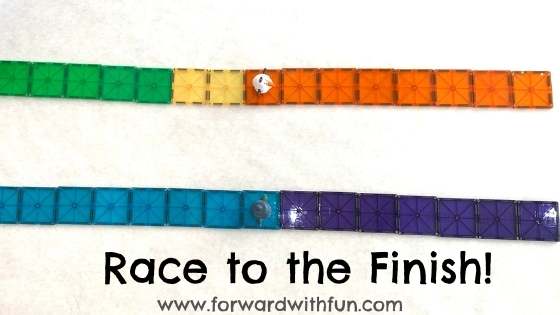
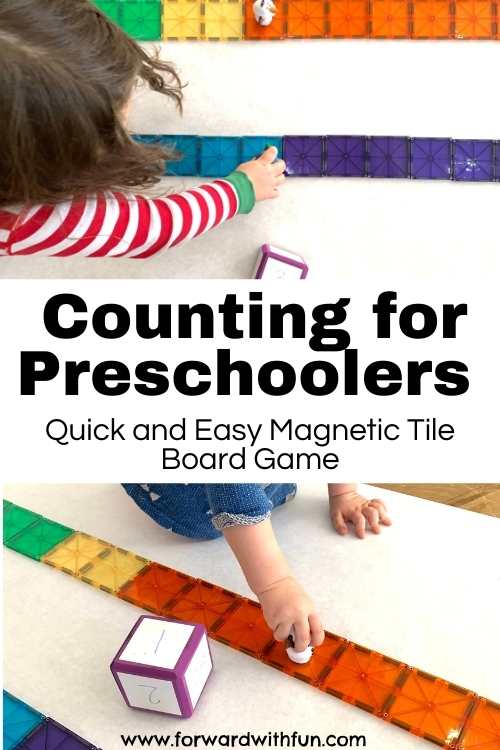
Lil Sis (2.5 years) doesn't yet have 1 to 1 correspondence so I tried these methods to help her better understand:
From beginning to end, she did begin counting with greater accuracy, and as we played again and again, she understood much more.
Kids make a lot of mistakes while rote counting, meaning they're just saying the sequence of numbers they've memorized. In a game, the numbers translate to movements on the board.
By actually having to move each piece only that amount, kids are more focused on counting slowly, leading to greater accuracy.
When kids are counting groups of objects by sight or just by pointing to each item (this happens often in number books when there are no actual manipulatives to move) they more easily lose track of the number of objects.
Giving children manipulatives (actual objects) and asking them to physically pick up and move each item will develop the 1 to 1 correspondence concept that every number said stands for one more item.
To sum it up, help your child develop 1 to 1 correspondence by making sure:
An excellent 1 to 1 correspondence activity that makes sure to do all these things is Dot Sticker Phone Numbers.
Leave a comment below to let me know how you practice 1 to 1 correspondence with your child!
Kids who count the wrong number of objects without noticing their mistake have yet to develop the important skill of one to one correspondence.
The definition of one to one correspondence is the knowledge that only one item is to be counted for each number that you say. To put it another way, each item in a group of items is only to be counted once.
Kids learn how to count out loud before they learn how to count quantities. Oftentimes, they're saying the numbers faster than they're registering the actual quantity. So my rule is to tell them to "Touch 1, count 1."
In these one to one correspondence activities with your phone number, your child will delight in matching the quantity of various objects to the numbers before them.

*As an Amazon affiliate, I may get a small commission for purchases made through links in this post at no additional cost to you.
Dot stickers are a wonderful tool for developing one to one correspondence because peeling the sticker will slow down your child's counting. As they peel each sticker, they should only count one number more in the sequence.
Is your child having trouble peeling the stickers? Remove the white backing from the page and it'll be MUCH easier!
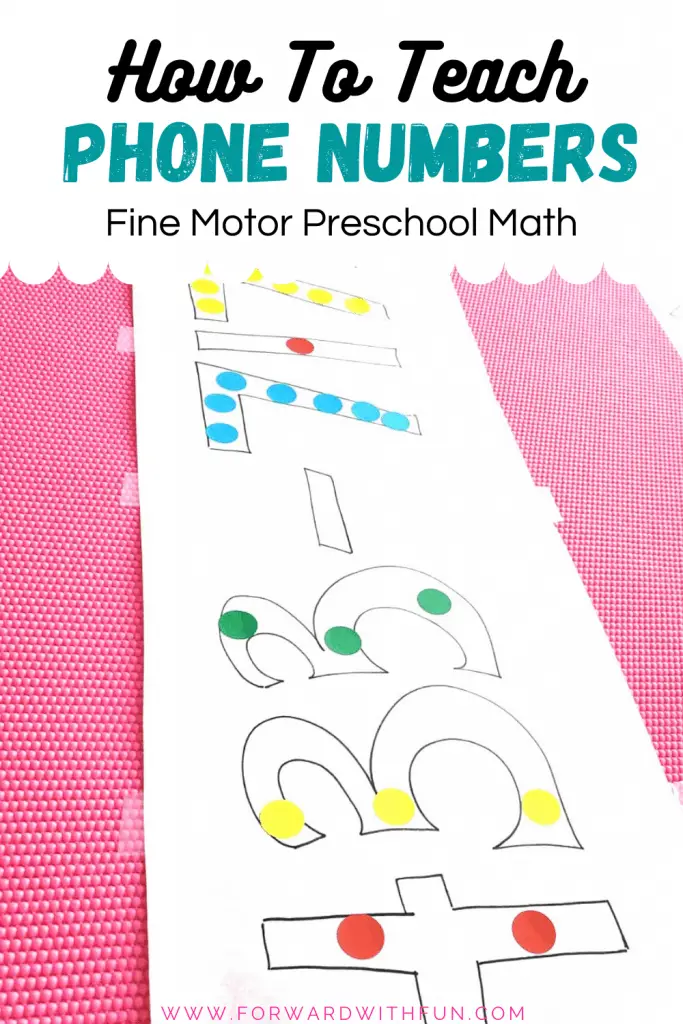
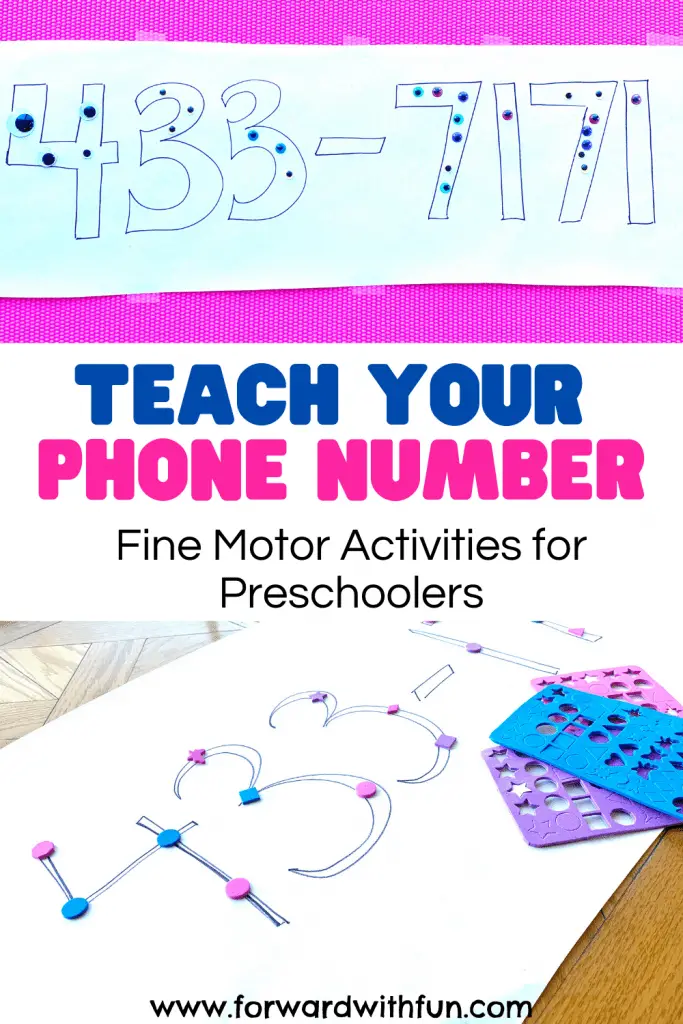
For beginner counters, try exercises where they have to actually move the objects they're counting. One excellent game that I use to build one to one correspondence with my 2 year old is this.
Moving the objects they're counting will slow down kids' oral counting to match the number of objects. As a result, they will better keep track of what they've already counted.
As children get more confident in counting, they might only touch the object, then point at it, and then ideally for smaller numbers, they'll be able to visually know how many they have quickly in a skill called subitizing. Domino games are great for subitizing!
Want more one to one correspondence practice? If your child likes snack time (who doesn't?), then they'll love this snacktivity aka snack activity.
